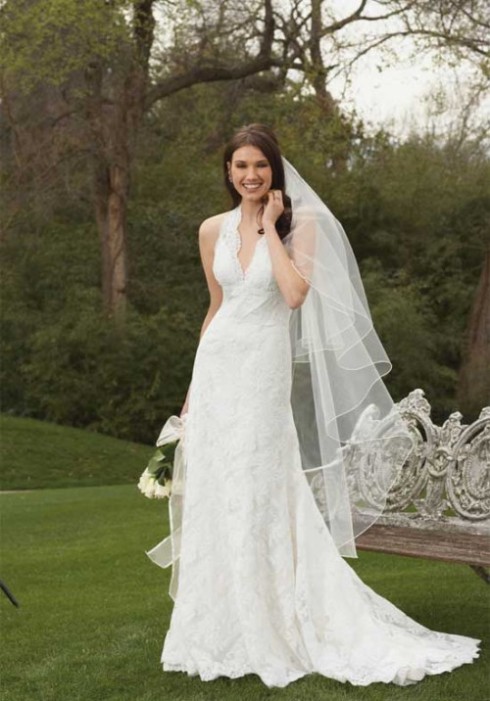Muslim wedding dresses: A Muslim bride on her special day usually wears a sharara, it’s a traditional wedding gown worn by the bride in her wedding. Other than a sharara, majority of brides consider hijab and a lehnga, a three piece cloth with a long blouse and a skirt. It also has a dupatta. Although brides now a days have modified the dress to short sleeves. Colors like green, blue and peach are considered for Muslim wedding dresses
Christian wedding dresses: The ritual is that the color white, symbolizes that the bride is a virgin. Actually the white wedding gown is a fashion explanation constructed by Queen Victoria and it is not compulsory to get married in the color white if one bride chooses not to. Certain brides might want to choose an extremely different color, like ivory, peach, etc. Women who were married before often consider wearing any color rather than white. Even if this is the bride’s first wedding she can choose whatever color she wants to get married in. The white dress anticipates Christianity, in times of Ancient Rome, white was used as a symbol of fertility rather than virginity. Separate cultures consider other colors; red was loved in China and gold or purple in India.
Indian wedding dresses: The dresvos of the bride is usually a sari and the bride wears all the ornaments. Her hair is made in a bun and is covered with a veil or a crown. Sandalwood is graciously applied on her face in the design of a crown. Her head is covered during her wedding favor as a mark of respect to the goddess worshiped and the elders present. The ghunghat, which is similar to the veil of the Christian bride, is worn by the Indian bride. It is possible that it might vary in length; it not only covers the head but the shoulders, back and almost down to the waistline is covered as well. The draping might be done is different ways. The chunri, worn with a Ghaghra choli, is tucked in at the waist on one end and is beautifully pleated all around the body and draped delicately over any one shoulder.
Jewish wedding dresses: The Jewish bride wears a white dress. For a traditional ceremony, the dress is modest, including a color that is not that low. Shoulders are covered, and maybe the elbows too. The veil is compulsory. The groom traditionally lowers the bride’s veil just before the huppah ceremony takes place. The tradition is related to the Torah passage that tells of Jacob unknowingly marrying the sister of the woman he loved the most. He was not told that he was marrying a different woman as the brides face was covered with a veil. Now the groom started lowering the veil so he could know who he was marrying. Any jewelry possessed by the bride on her is removed before the huppah ceremony; it is done to show that we marry a person, not that person’s possessions. The jewelry is given back after the ceremony finishes.
